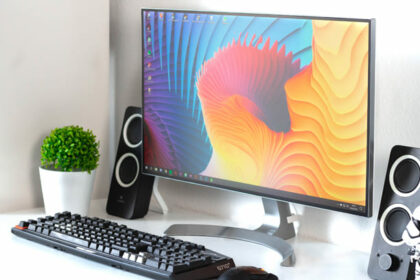Having some difficulties with changing your refresh rate for a better and smoother gaming experience?
In this article, I will show you a couple of different ways to change the refresh rate on a monitor via your GPU.
For the ones that want to take it a step further, I will show you how to overclock your refresh rate on Nvidia & AMD GPUs.
Changing Your Refresh Rate, the Easy Way

In case you quite literally don’t know how to change your refresh rate, provided you have all the relevant cables plugged into their relevant ports, for Windows 10, head over to Settings > System > Display > Advanced Display Settings > Display Adapter Properties.
After that, head over to the “Monitor Tab” and pick your desired monitor’s refresh rate from the drop-down menu.
Then, click apply and enjoy your new refresh rate.
In case that doesn’t quite work, you can check out the guide I wrote to troubleshoot why your 144 Hz monitor is running at 60 Hz.
Overclocking Your Refresh Rate

If what you are after is overclocking the refresh rate of your gaming monitor, then continue reading as below, I will show you how you can overclock your refresh rate if you are using either an Nvidia or an AMD GPU.
Overclocking Refresh Rate for Nvidia
If you are using an Nvidia GPU, the process is really simple.
- Right-click on your desktop and select the Nvidia control panel.
- Then, expand the display menu.
- Click change resolution, and then create a custom resolution.
One benefit of Nvidia is that you can test your custom settings before you apply them. Once you are happy with your customization, reboot your machine, and follow the steps from the beginning of the article to implement the custom refresh rate settings that you have just created.
Overclocking Refresh Rate for AMD
If your build features an AMD GPU, you can overclock your refresh rate by making use of the AMD Radeon Settings application. All you need to do is click the applications’ icon in your taskbar and follow the steps from below.
- Right-click on your desktop and click on the AMD Radeon settings.
- Next up, click on the Display tab.
- After that, right besides custom resolutions, click on create.
- Modify the refresh rate to your desired level, and then click Save.
After that, reboot your system and use the steps at the beginning of the article to change your refresh rate.
And that is it. Hopefully now you can enjoy playing your games in a more smooth manner because of the higher refresh rate.









